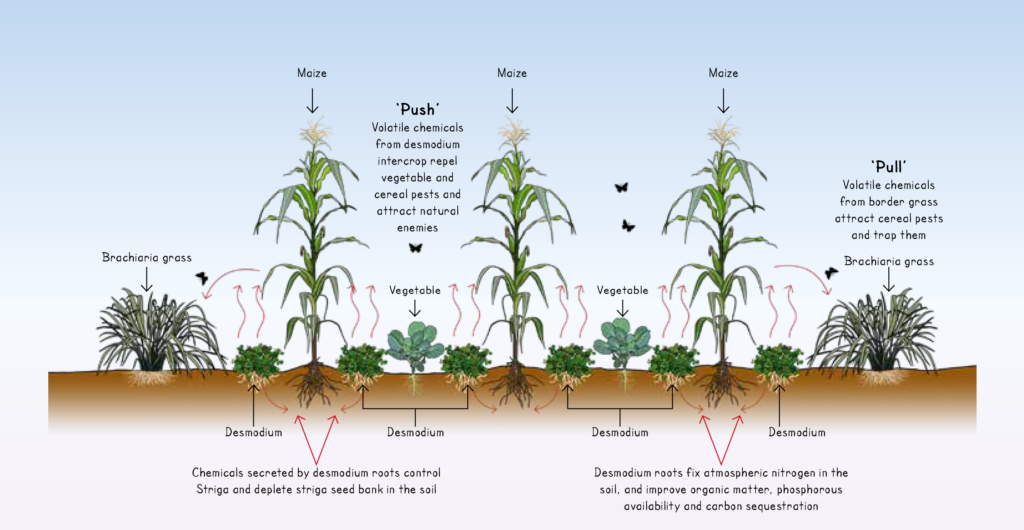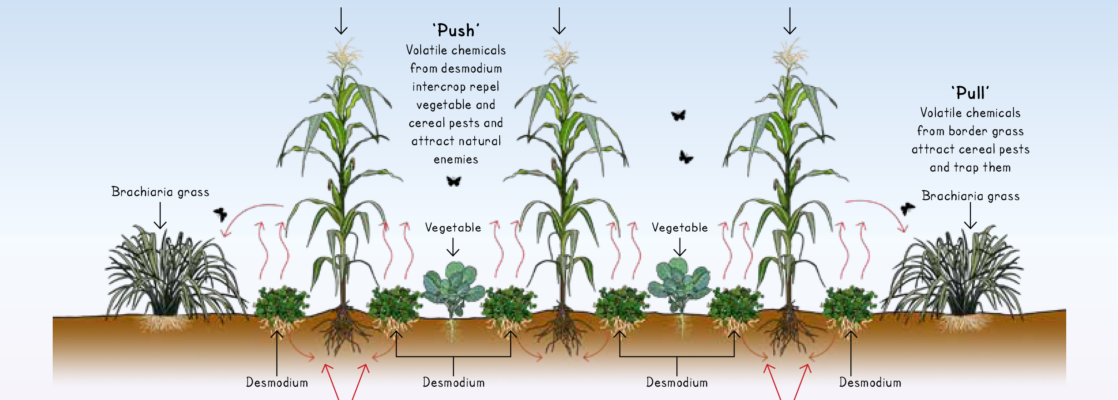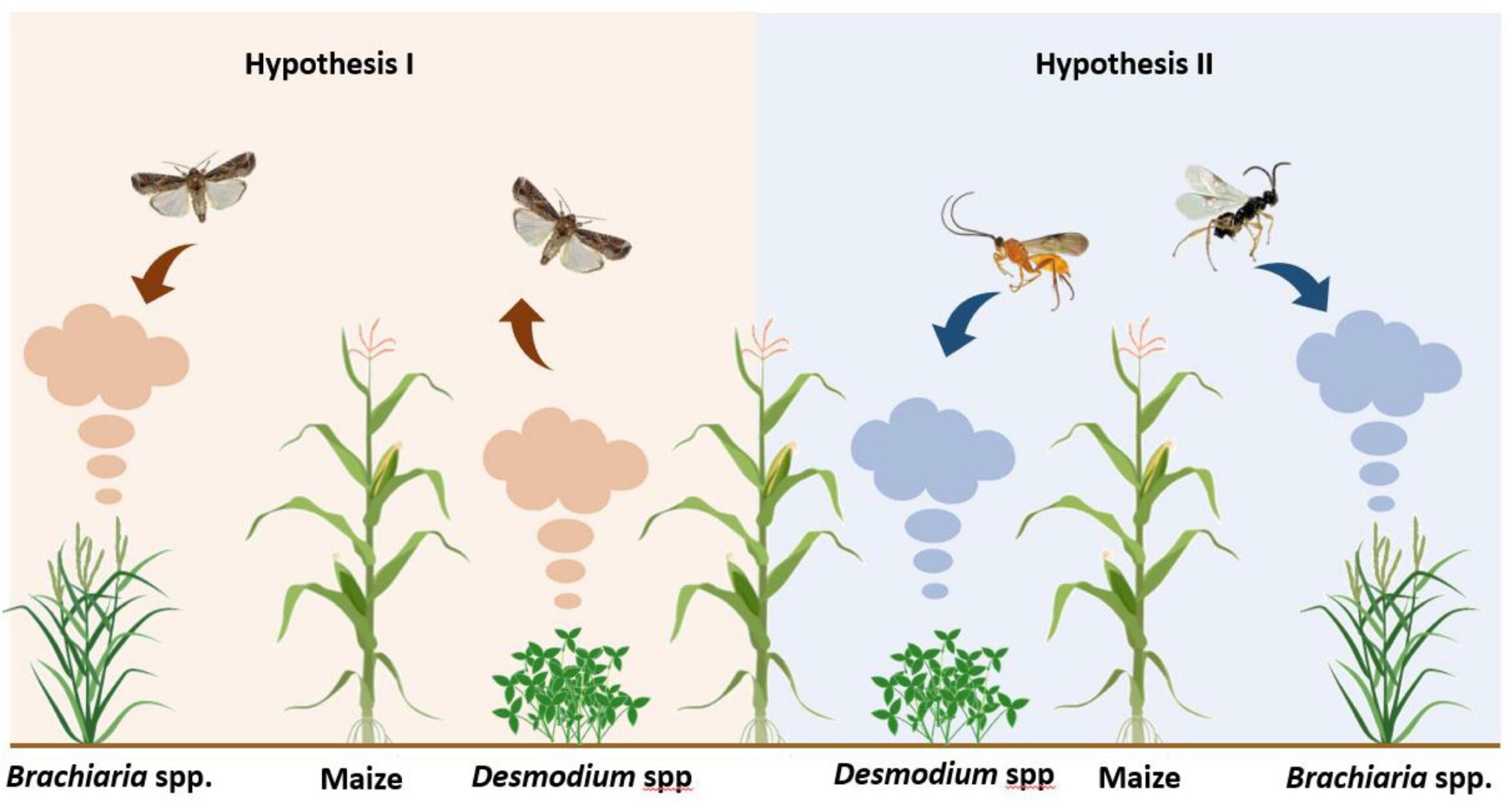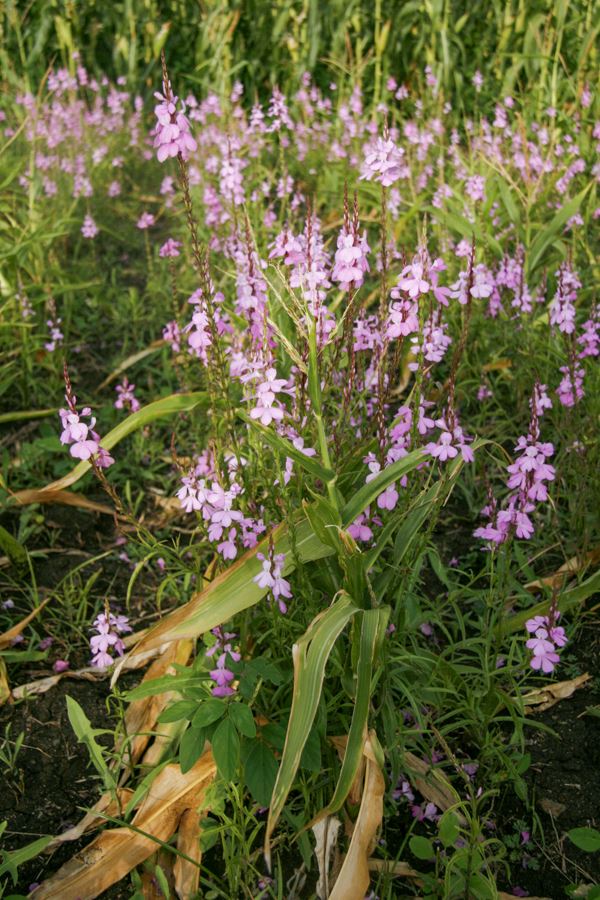In 2016, Africa was invaded by a new threat to crop production called fall armyworm. It is a highly destructive moth that inflicts damage to a variety of crops and is most devastating to cereals such as maize and sorghum. Originally from the tropical and sub-tropical regions of the Americas, the pest has rapidly expanded its territory across the continent, rendering some traditional control methods ineffective and leaving farmers, governments, and stakeholders in despair with total damage in the continent estimated around USD 200 million.
Plots implementing push-pull demonstrated an impressive 80% reduction in fall armyworm infestation compared to traditional monocropped maize plots, presenting an environmentally friendly and cost-effective approach to pest management.
UPSCALE Tweet
In 2017 farmers in western Kenya and Uganda reported little or no damage in the plots where the Push-Pull Technology (PPT) was being implemented. This was a pleasant surprise as the PPT, developed by the lnternational Centre for Insect Physiology and Ecology (icipe) and partners, was originally intended for managing a group of moths often referred to as stemborers for the damage they cause the stem of maize before curtailing productivity. Based on observations made by farmers and subsequently confirmed through rigorous field evaluations and socio-economic assessments by icipe researchers, the PPT became one of the front-runners in the fight against fall armyworm. Notably, plots implementing push-pull demonstrated an impressive 80% reduction in fall armyworm infestation compared to traditional monocropped maize plots, presenting an environmentally friendly and cost-effective approach to pest management.

In its original form, the PPT involves intercropping cereal crops with leguminous fodder plant of the Desmodium genus. These legumes continuously emit defence odours, even when there is no pest attack, which repel stemborer moths (the “push” effect) away from the main food crop. Additionally, fodder grasses of the Brachiaria is planted as a border crop, releasing chemicals that attract and trap the stemborers (the “pull” effect). This protects the cereal crop from the pests. Moreover, Desmodium also helps suppress the parasitic Striga weed through their root exudates that stimulate Striga seed germination but inhibit their growth after germination.
Both Desmodium and Brachiaria emit chemicals that attract natural enemies of the fall armyworm
UPSCALE Tweet
A recent study conducted by icipe and Keele University revealed the mechanisms behind fall armyworm using the PPT. The scent from Desmodium, is equally a potent tool for repelling fall armyworm. Surprisingly, the border plant, Brachiaria, which traditionally served as a “pull” plant, attracting and trapping pests, serves as a “push” plant, repelling fall armyworm pests as well. Both Desmodium and Brachiaria also emit chemicals that attract natural enemies of the fall armyworm, further aiding in pest management.
This newfound understanding helps in development of comprehensive management strategy for the fall armyworm, integrating push-pull technology and other strategies such as natural enemies, biopesticides, and resistant cereal varieties identified in previous research. The study’s findings also contribute to global knowledge on utilizing insect behaviour and stimulation and deterrent approaches in pest control.
Given the success of push-pull against the fall armyworm and several of its other documented benefits the upscale project aims to disseminate the technology extensively across east Africa, offering significant potential to address the challenges faced by cereal-livestock farming systems in the region, ultimately benefiting farmers in improving food security.
Prepared by Lavender Odhiambo and Frank Chidawanyika (PhD)



